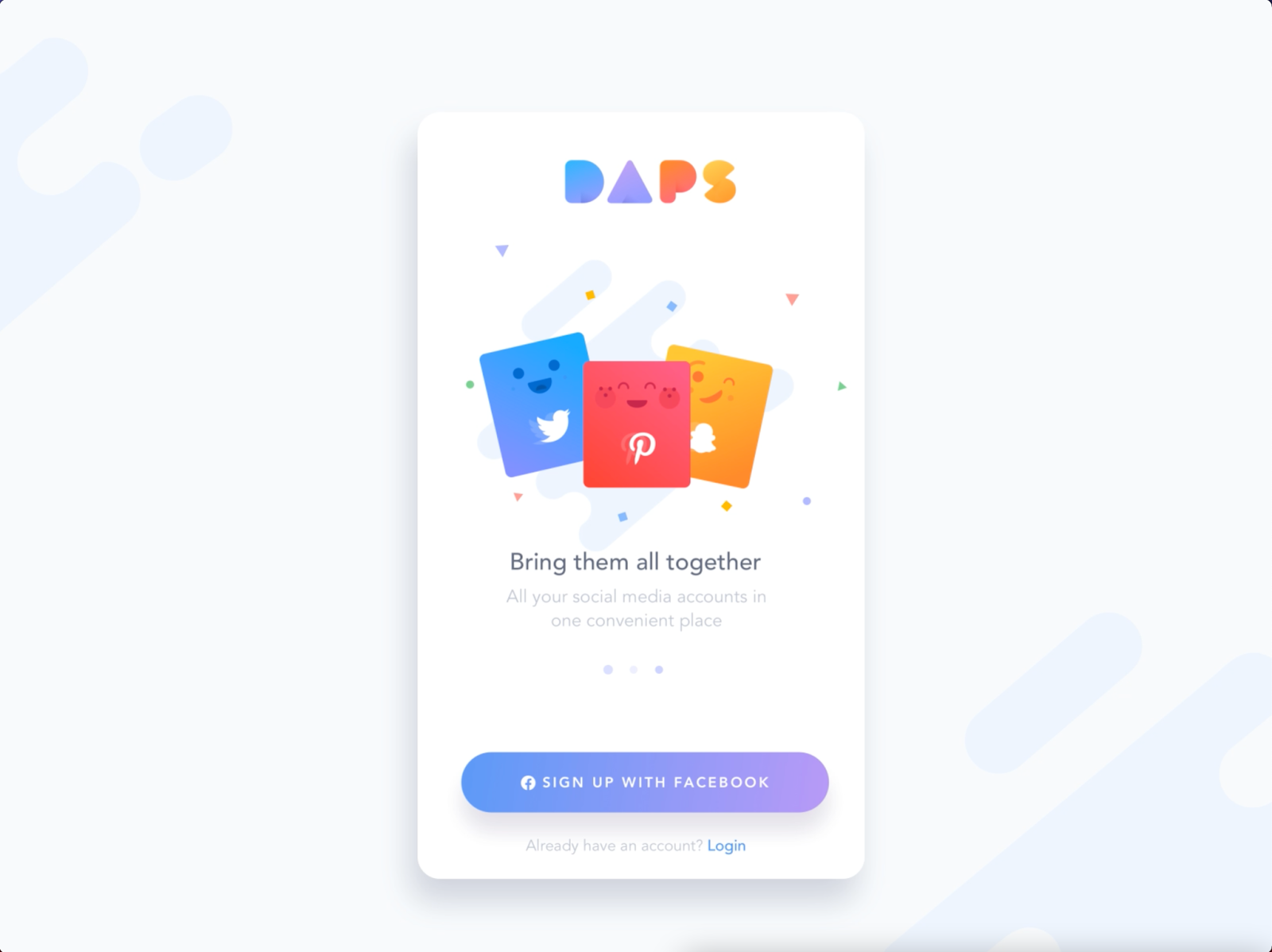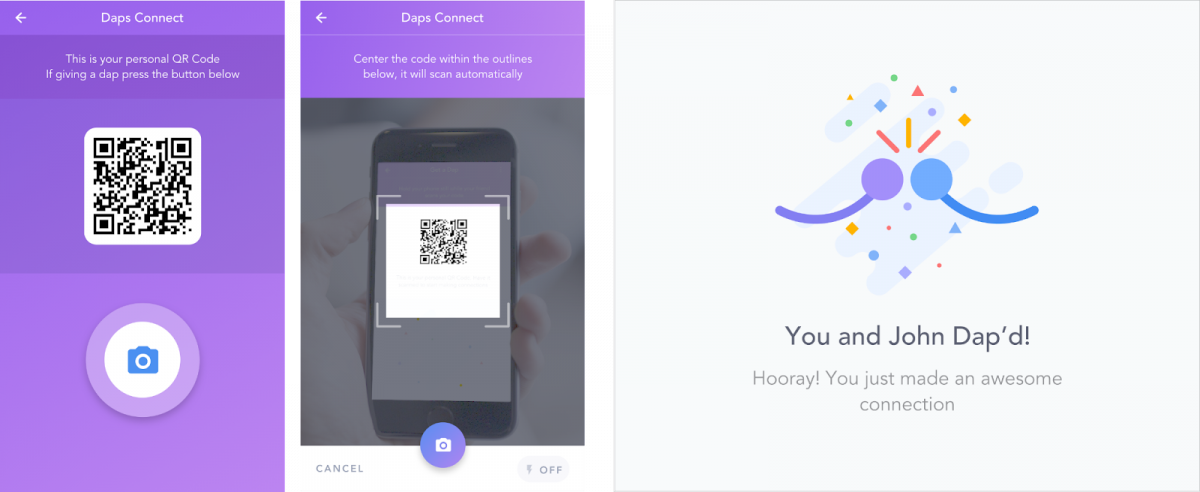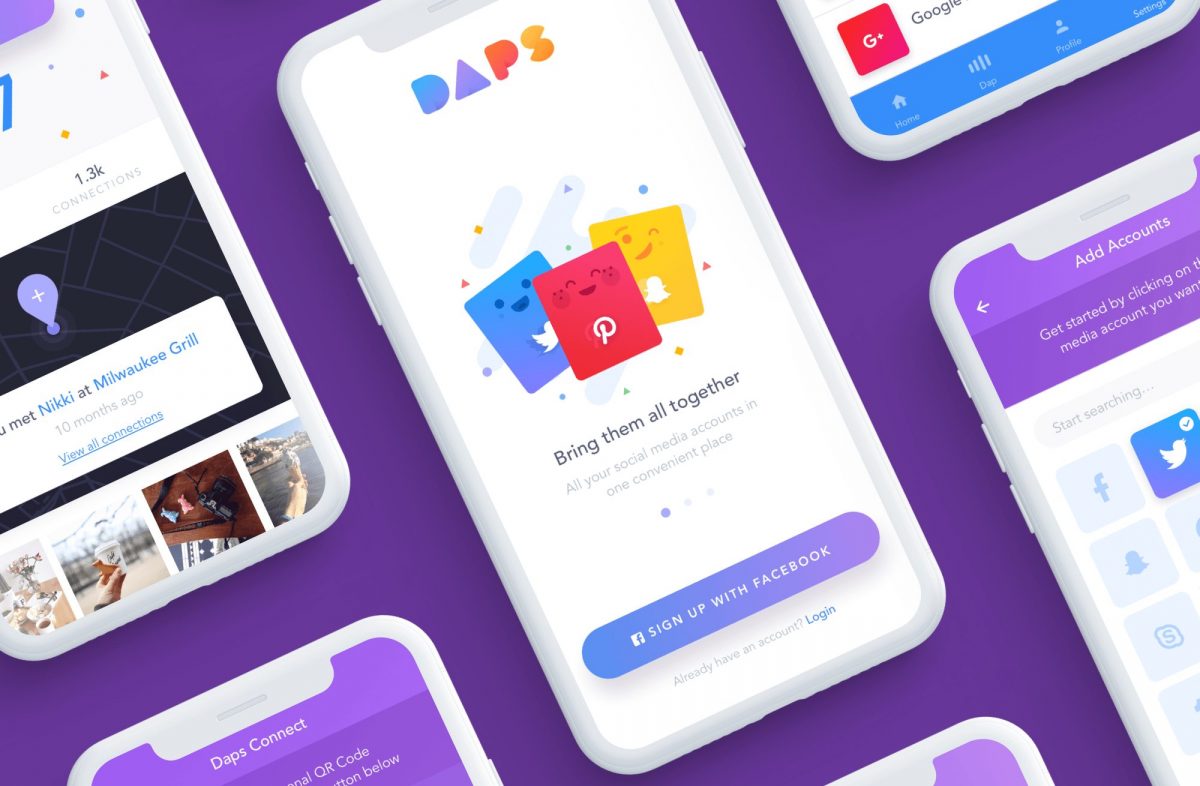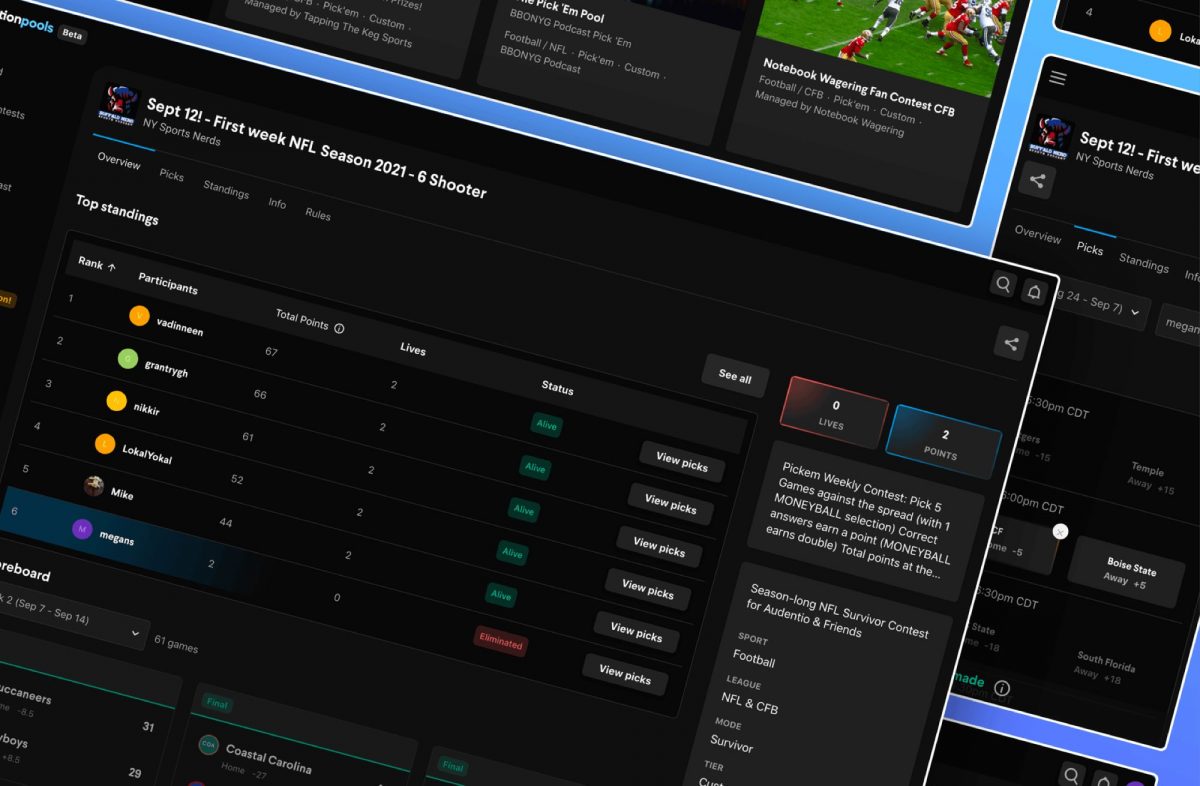Share This Article
Daps approached us to build a minimum viable product that was more than a social media manager and would allow you to track friends and engage from a single location. Although for this project we were initially tasked with fixing a broken app, we identified that this industry is flooded with apps of a similar concept and we needed to develop one with features that stood out as a strong alternative to others in the space.
We determined that a full app rebuild and new brand identity would be necessary, so we set out to rebuild the app following our coding standards and creating a cleaner, playful look to stand out against other brands. For a closer look at this project, we handled:
- Design and user flow for critical views in the app
- Functionality development for user registration, social media account management, profiles, friend management, DAP connect, location setting, and push notifications
- Developing a brand logo, styleguide, and app icons
- Support after app launch to ensure stability

What’s a minimum viable product?
A minimum viable product is an early version of a product that meets the necessary requirements for the product, but can be further developed in the future. This product is meant to have enough features to attract early adopters, validate the product concept, and be a quick way to receive user feedback quickly from customers for further iteration and feature development.
A minimum viable product can benefit your project because you can test a concept with your user base before committing to a large development project and help you learn what resonates with your user base and what doesn’t.
Strategy and design process
We started this project process by doing initial market research to establish competitors and determine the list of features they have versus what we would need to stand out against other tools. From this research, we were able to update the Daps brand, styleguide outlining use for the color palette, typography, and any imagery, and app icons to be displayed in the Google and Apple app stores.

From this process, we designed a series of views to plan out integral areas of the app and focused on creating an intuitive user experience and cohesive app design.
Creating a prototype
Before starting the development process, it was critical that we create an interactive prototype and prove our concept. This allows us to see a rough design of the product and test the user flow before committing to further development of the minimum viable product.

We started by wireframing the key components on the app before creating an interactive prototype while going through rounds of iteration to land on a proof of concept. After the process was completed, we were able to determine how features could be built and provide tech recommendations for a strong infrastructure while being extendable for new features to be built in the future.
Development an MVP
After creating a strong proof of concept, we were able to start the development process for the Daps app. We handled project management and quality assurance to ensure that goals are being met in a timely manner and all features are working as intended. For each project we do, we work with the latest coding standards and make sure the project is compatible with the latest iOS and Android systems. Throughout the development process, we created systems for:
User registration
We created the ability to register and login with Facebook. When a user chooses to register with Facebook, contacts, profile pictures, locations, and other data is imported to the user’s Daps profile. If a user chooses not to link their Daps account and their Facebook account, we include an independent register and login system within the app.
Social media account management
Users are able to manage their social profile including features such as: delete, edit, assign priorities, and manage visibility. Building in these features, we focused on enhancing user experience through intuitive features and placement of management options.

Filter by friend
We built functionality that allows a user to filter by friends across connected social media or to filter through friends connected on Daps. This allows for greater connectivity potential between friends and opportunity to give friends of users exposure to the app and hopefully join.
GPS location
The app has the ability to access GPS and use Geo-IP to determine the user’s location and to offer location suggestions. If GPS is enabled, location is automatically stored. If not enabled, the app asks for permission to enable GPS. If the user opts out of this, the location can be manually entered and edited to facilitate connections.
Email and push notifications
Email and push notifications are incorporated into the app and users can determine which notifications they want to receive in settings. People can receive notifications for new followers, new accounts for added friends, and milestones reached for follower accounts.
Let’s wrap it up
The result was a polished minimum viable product app that was released in both the Google Play store and the Apple app store using React Native as a framework. If you’d like to learn more about how we can help build your minimum viable product, check out our services here.


